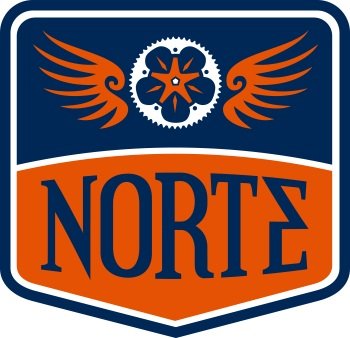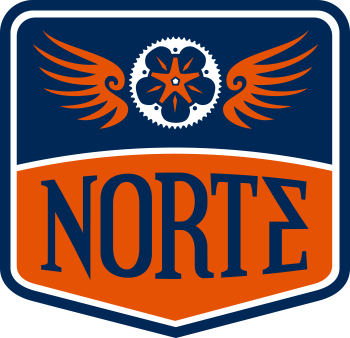Why Mountain Biking Trail Etiquette Matters
Mountain bike trail etiquette keeps all trail users safe. Having an established and universally understood framework of trail etiquette for mountain bikers, runners, and hikers ensures that multi-use trails are safe for everyone. Whether it’s a casual ride with friends or the middle of a race, mountain bike etiquette is a vital part of our sport’s history and culture.
Mountain Bike Trail Etiquette 101
Every time you ride, you represent the entire mountain biking community. Follow these tips to serve as an ambassador for our sport - we’re all counting on you!
Minimize Your Trail Impact
It may take seconds to blow out a corner or carve out a deep muddy rut, but it takes hours to repair. Stay off wet trails when necessary - contact your local trail association or bike shops to learn when it’s okay to ride and when to avoid the trails.
Avoid riding in mud; it's too soft to ride if you’re leaving a rut or a footprint.
Don’t Slide
If you’re skidding or sliding, you’re contributing to trail erosion. When possible, avoid slamming the brakes and skidding through corners, damaging the trail surface, exposing tree roots and rocks, and degrading the experience for all riders.
Stay on the Trail
Non-sanctioned trails, or “bandit trails,” are unauthorized sections of trails that could damage vegetation, change traffic patterns, or contribute to erosion. Don’t build rogue trails; if you’re interested in trail building, focus your efforts alongside your local trail crew. Whether riding on public or private land, it’s not your property - respect the land manager’s authority.
Respect All Trail Users
Most trails are open to everyone. Respect hikers, other mountain bikers, and everyone looking to enjoy the outdoors. Mountain bikers’ higher speeds tend to startle other trail users, which means we have an added responsibility to be courteous.
The Right of Way
The core of mountain bike etiquette is the right of way. Unless specifically posted, the traditional yield triangle is:
Mountain bikers yield to hikers and all foot traffic
Hikers and foot traffic yield to equestrians
Downhill users yield to uphill users
As a basic rule of thumb, faster traffic should yield to slower traffic. When in doubt, ride predictably and communicate your intentions clearly so everyone knows what to expect.
Mountain Bike Race Etiquette
Being a considerate, safe rider doesn’t stop on race day. Even at full speed, mountain bikers have a responsibility to each other to ride safely and predictably. Intensity and speed increase the importance of proper race etiquette, just as they increase the risk of riding recklessly.
Lapped Riders Yield
On short lap races, lapped riders being overtaken by the leaders should yield. That often means moving out of the way of the top riders and any rider still on the lead lap.
The Leader Calls the Ball
If you’re riding in a group and expect to overtake a single or multiple riders ahead of you, it’s the lead rider’s responsibility to announce the pass. If Group B is overtaking Group A, the first rider in Group B should:
Announce Group B’s presence
Request to pass when it’s safe
Let Group A know how many riders to expect to come by
Group A’s last rider (the one most likely to hear the group coming up behind) should verbally relay the information forward.
Announce Your Pass
The safest way to pass a slower rider is to let them know when you will pass and on which side of the trail. A good example of this might be:
“Hey, you’re doing great! I’m going to pass on your left just past this turn!”
Or
“Great job! I’m going to pass on your inside at the right-hand turn coming up!”
Remember, if you’re in a group, try to communicate how many riders will be attempting to pass so the slower rider knows when they can return to the center of the trail.
It’s in the best interest of everyone to stay calm and polite; the slower rider should acknowledge the overtaking rider and let them know when they’re ready to be passed safely.
Get Out of the Trail
If you crash, have a mechanical, or stop for any reason, get out of the trail immediately. Especially in tight sections of trail, riders may find it very difficult to see around the next bend and won’t be able to stop. The same goes if you have to walk a steep hill; move to the side of the trail immediately so riders still on their bikes can get by.
Crashes Happen
Always ask downed riders if they need help - no race is worth leaving someone injured in the woods. Once you’re convinced they’re okay, keep riding. If the crashed rider needs help, here’s what to do:
Don’t ask them to move if they’re in pain. Shout out to oncoming riders to get them to slow down.
The first rider on the scene should ask others for help getting medical assistance. If someone asks you to find a medic, find one.
Provide the help you feel comfortable offering, but don’t attempt CPR or other medical assistance unless you’re a trained professional. All anyone can ask is your best; anything else may do more harm than good.
Mountain Bike Etiquette Keeps Us All Safe
Mountain bikers are a special breed and a tight-knit community. Understanding and following these universal rules keeps us all safe and protects trails. When in doubt, contact your local trail association - in Traverse City, that’s the Northern Michigan Mountain Biking Association.
Love mountain biking? Learn more about Norte Youth Cycling, northern Michigan’s non-profit, bike-centric organization that supports strong, healthy, active kids. We’re always looking for people to get involved; become a Norte coach today!


